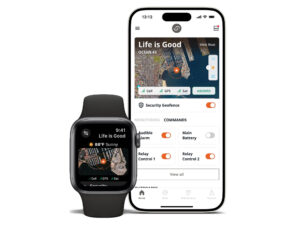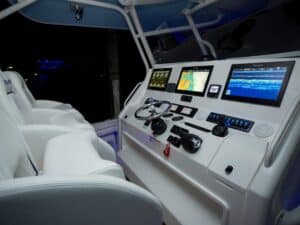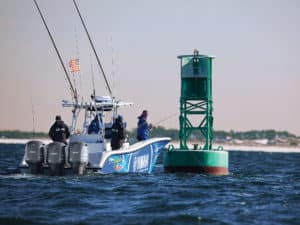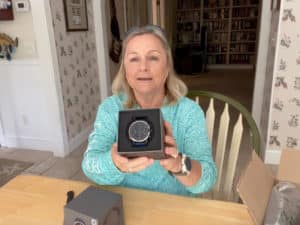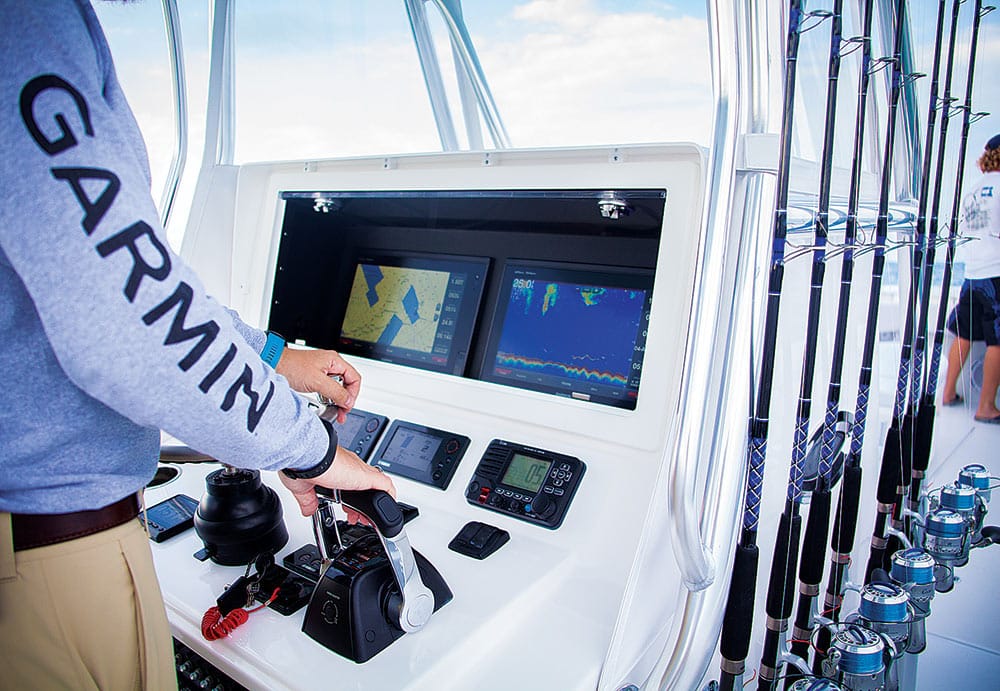
For my style of inshore fishing, in my coastal Georgia location and for my 22-foot bay boat, I need some specific sonar capabilities. I want to see what’s to either side of my boat, and I want to see subtle depth transitions in shallow water, without surface clutter.
Analyzing how I fish helps me understand what I need electronically. To help other anglers, I’ve asked pros and experts who use a variety of sonar gear in vastly different environments to offer suggestions regarding what units and features are optimal for different kinds of fishing.
Bottomfishing Options
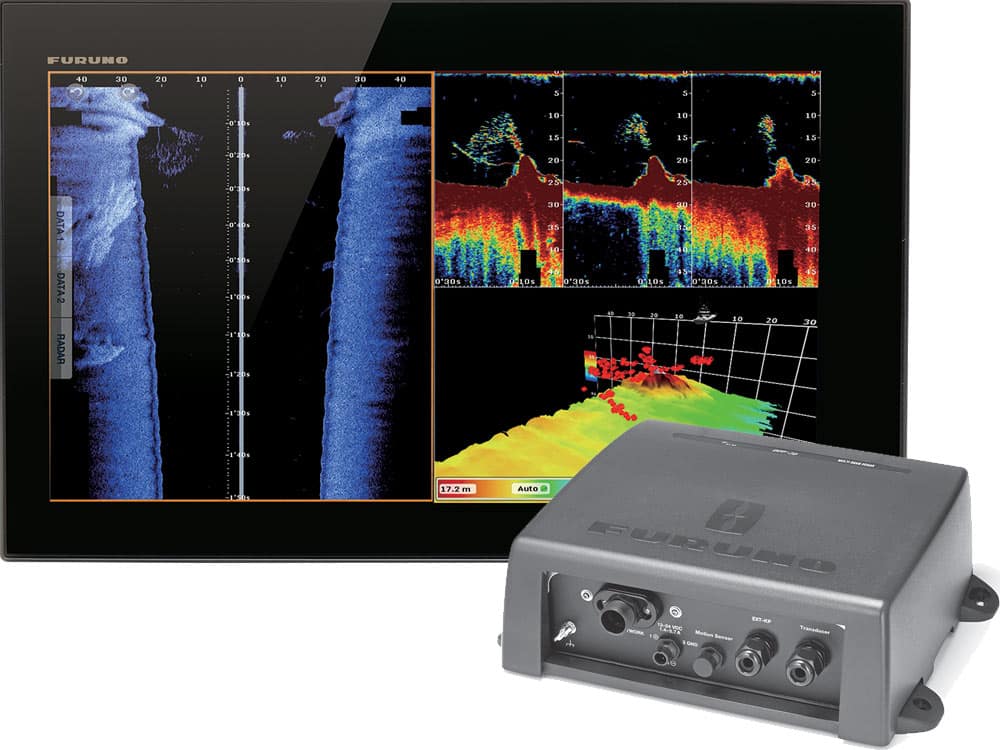
Furuno pro staffer Capt. Sean Gill, of Savannah, fishes many of the same coastal Georgia locations as I do, though he also works offshore waters. “I use the bottom-discerning technology in my Furuno TZtouch2 multifunction display all the time. For example, grouper like a hard, rocky bottom with ledges and cracks and crevices; snapper like a more-open sea fan/sponge area with sand and gravel. The bottom-discerning technology shows you the different types of substrate, making you more effective in your approach.”
Furuno’s new DFF3D multibeam sonar (an add-on module with 3D) has also changed the way anglers see the ocean floor. “Now I can map out structure like never before,” Gill says. “A great example here is cobia fishing. The cobia are located at different current breaks on structure throughout the tide, so it’s paramount to understand how everything is oriented on the bottom. Using this technology, you can literally see all the features of the structure and how the fish are lying, thus making you more effective in setting up a drift or allowing you to anchor more efficiently.”
Pinpointing Structure
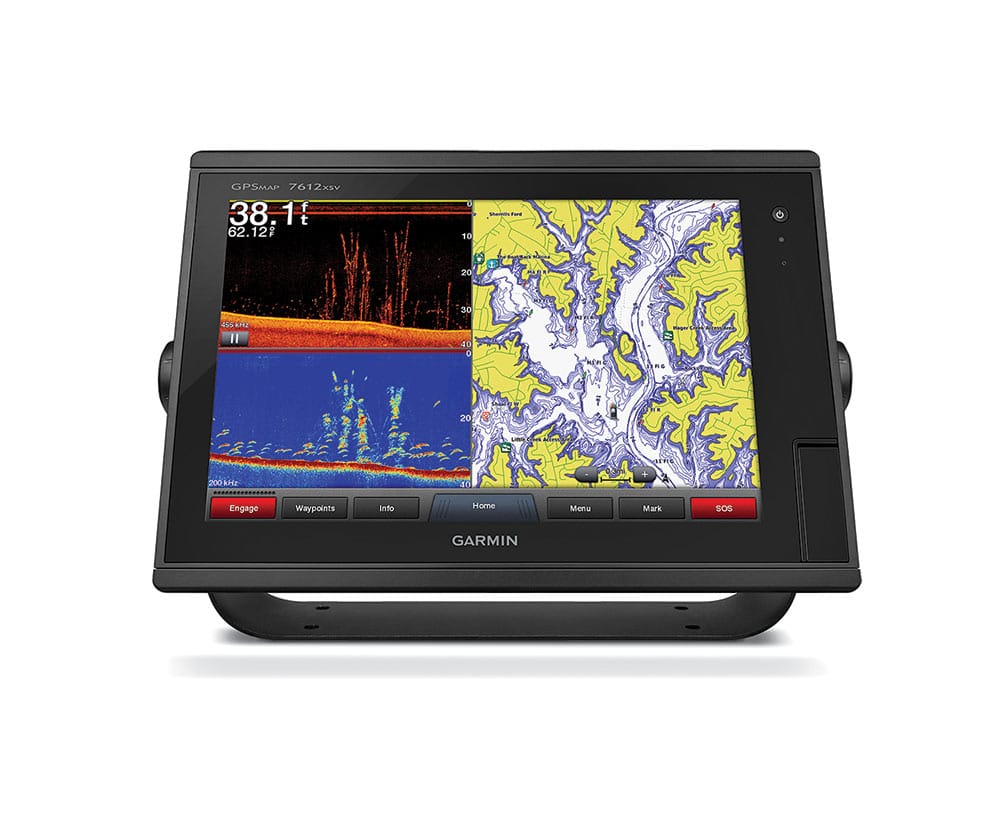
David Dunn, Garmin’s director of marine sales, recommends the GPSMAP 7612xsv with built-in chirp sonar, ClearVü and SideVü scanning sonar paired with a GT51 transducer (available in transom mount and through-hull) — capable of detecting ClearVü targets up to 300 feet and SideVü 600 feet to each side, “so anglers can find wrecks without as many passes. Once they get anchored, they can use chirp to see below the boat,” he says.
Humminbird pro Capt. Phillip Wilds, of Panama City, Florida, recommends a Solix Chirp Mega SI sonar with an Airmar B175H transducer. “This is the best high-range chirp setup for 300 feet or less. It is capable of chirping at frequencies from 130 to 210 kHz.”
Wilds likes to split-screen his Solix display: One half of the screen shows a zoomed-in view of the bottom; the other half shows surface to bottom. He turns up the sensitivity as high as possible without getting too much clutter, and leaves the gain on max mode. “The target separation is magnificent, and those frequencies work great in that depth of water.
“In depths less than 120 feet, I use the Mega down imaging and Mega side imaging. This works exceptionally well for large structures with a lot of bottom relief. When you’re able to use the Mega down imaging, you can easily identify one species from another.”
Capt. Tom Pitasi, a Raymarine pro ambassador and guide out of Waterford, Connecticut, says Raymarine’s sonar systems with chirp DownVision are a great choice. “The conical high chirp shows you the fish, and the chirp DownVision is a great tool for locating the structure,” he says. Chirp DownVision sonar is built into eS Series MFDs and CP100 sonar modules; the latter can connect to any of Raymarine’s current MFDs.”
Raymarine also offers several models in its new Axiom line with this capability. The deluxe Axiom RV features chirp DownVision, chirp SideVision, conical high chirp and RealVision 3D. For the budget-minded angler, Raymarine also offers Axiom 7 DV models that have chirp DownVision and conical high chirp only.
Proper Frequencies
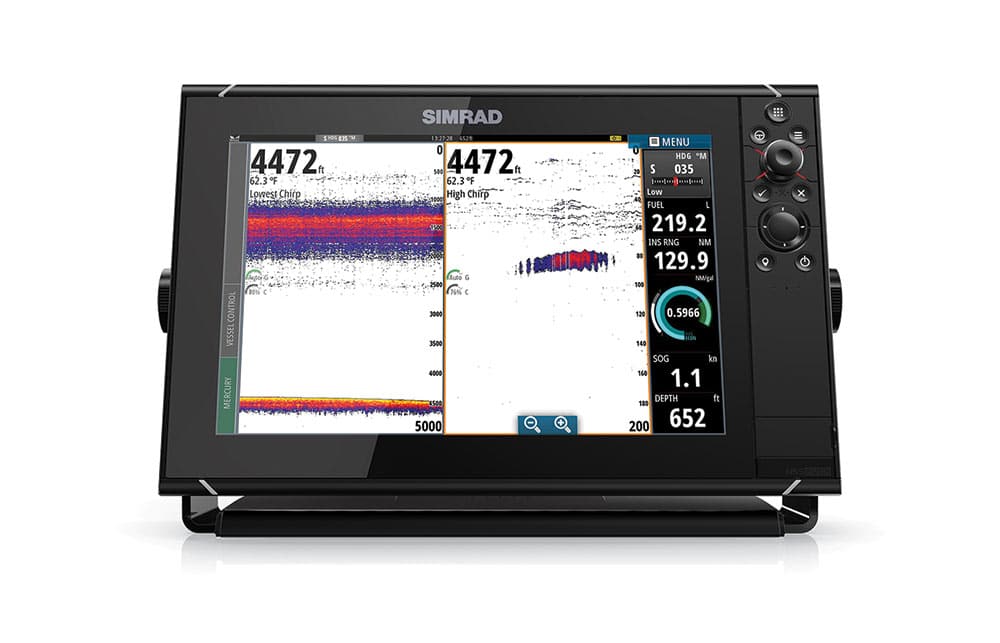
Capt. Greg Eklund uses a Simrad NSS evo3 display on his 48-foot charter boat out of Islamorada, Florida. “We do a lot of bottomfishing between 75 and 300 feet. When choosing a transducer, it was important that it be versatile and also maximize the capabilities of my echo sounder. The Airmar R509LHW is a perfect fit.
“It’s chirp-enabled and can also broadcast on single frequencies between 28 and 60 kHz, on the low side, and between 150 to 250 kHz, on the high end. It also has an ultrawide cone that produces a 9- to 23-degree beam on low and a 25-degree beam for the high frequencies. This allows me to cover more of the water column.”
Eklund paired the transducer with Simrad’s new S5100 network sounder. The multiple-channel capability allows him to use the chirp mode and a single frequency at the same time to get the best possible information. “For example, as I get to an area in less than 300 feet that I want to fish, I set my evo3 screen to display two panels,” he says. “In the first, I show a single frequency, such as 200 kHz. In the second, I use the high-chirp function. I use the cursor on the evo3 and highlight the exact spot I want to fish, and create a waypoint.”
“When trolling, I set up one of my evo3s to just supply me with information about what is in the water under my boat,” Eklund says. “I like to look at the upper 300 feet of the water column using a single frequency of 200 kHz. The wide angle of the transducer at 200 kHz, coupled with the detail of the S5100, allows me to get the maximum amount of coverage and information about the bait and target species.
“I am also able to run a low-chirp scan on a separate panel. This allows me to see the entire water column.”
Trolling Options
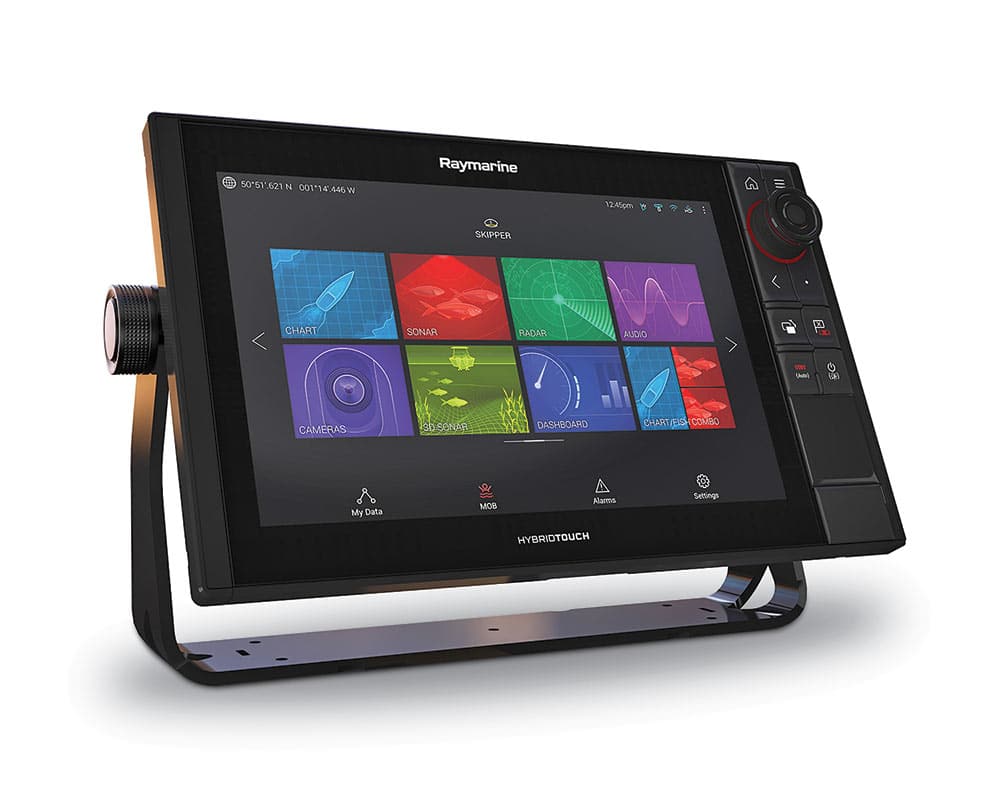
Raymarine’s Pitasi suggests the company’s brand-new Axiom Pro displays. “The Axiom Pro builds on the capabilities of Axiom. The Axiom Pro units are HybridTouch multifunction displays with built-in RealVision 3D sonar, plus a built-in 1 kW chirp offshore sonar.
“Axiom Pro is the most powerful MFD we’ve ever offered, with fast quad-core processing, ultraclear IPS displays and the choice of 9-, 12- or 16-inch screens. Axiom Pro also comes with dual transducer connections: Connect a RealVision 3D RV100 transom mount or an RV200 or RV300 series through-hull transducer to one port, and connect an Airmar chirp transducer to the second port.
“Current aSeries, eS Series and Axiom systems can add some extra offshore punch with a CP470 sonar module. It can be paired with an Airmar chirp transducer up to 2 kW, to show fish in depths up to 10,000 feet.”
Deeper Depths and Challenging Locations
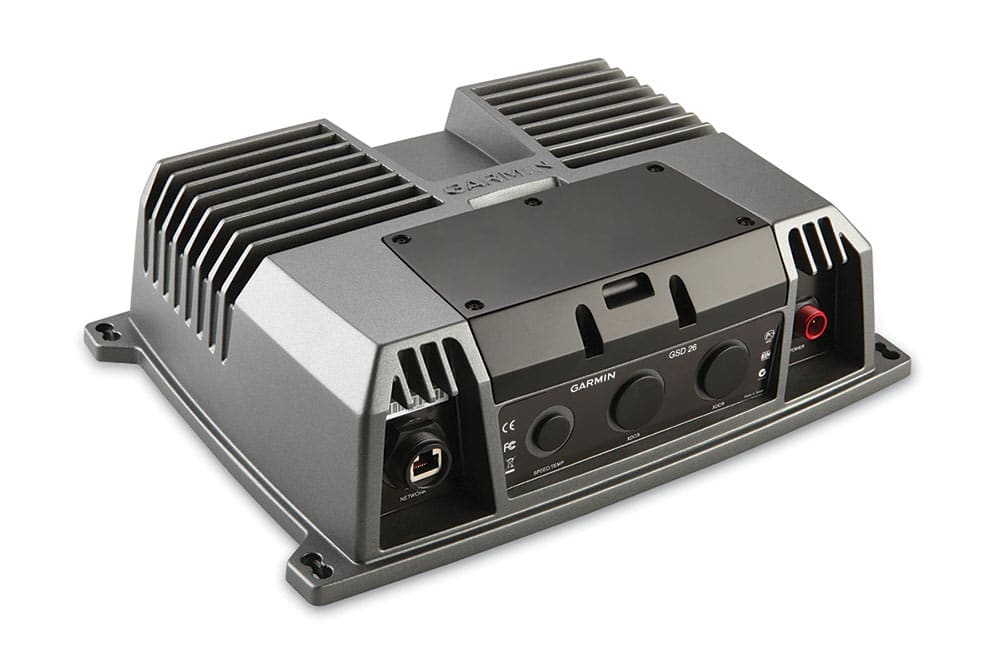
For true deepwater penetration, most pros and experts recommend higher-power chirp-sonar modules, such as Garmin’s GSD26, Raymarine’s CP570 and Simrad’s new S5100. These units, coupled with Airmar’s powerful chirp transducers — especially the wide-angle options — can allow anglers to see targets more than 10,000 feet down.
For fishing weed lines and kelp paddies, Raymarine suggests the Axiom Pro, which has a new feature debuting at press time called RealVision 3D with GPS tracking (also planned for Axiom units). “As you circle the weed line, or make passes along its edge, the system automatically constructs a very detailed 3D model of the water column, weeds and bottom structure,” Pitasi says. “Adjacent lines are automatically attached to one another, and the 3D model is fully dynamic on the Axiom or Axiom Pro MFD. You can simply touch the model to freely pan or tilt it for viewing from any angle. A double-finger sweep lets you fly across the model, and a pinch will zoom the model in or out.”
Inshore and Shallow Water
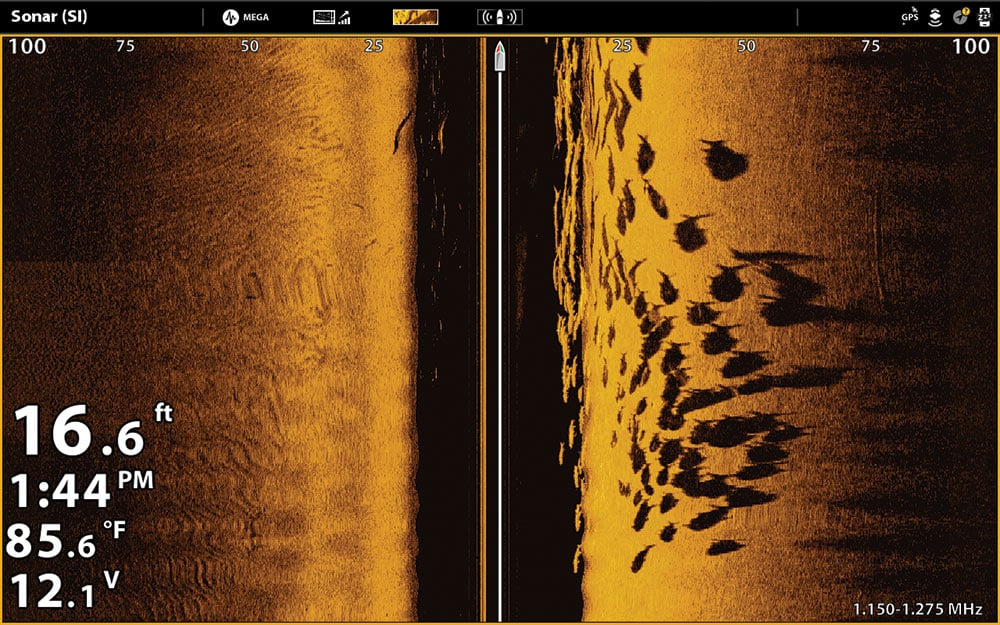
Key West Capt. R.T. Trosset uses a Lowrance HDS-12 Carbon with a B260 through-hull transducer and a StructureScan transducer, paired to a MotorGuide Xi5 trolling motor, for targeting trout and redfish as well as tarpon. “When trout- and redfishing, I like the autopilot mode on the motor. I can set up and save trolling-motor routes on my Lowrance screen while fishing a flat, and then travel pothole to pothole. Or, if fishing a shoreline, I can fish snag to snag, leaving my hands free to change lures or rig other rods.
“Another feature is being able to operate my trolling motor and Power Pole from the unit. When fishing tarpon, the StructureScan gives me a great side view of fish. It tells me the distance the fish are from the boat, how many, and on which side the fish are located. I’ve thrown baits to StructureScan-marked tarpon, and caught quite a few. When the fish are not rolling, marking them gives me confidence to keep fishing in that area. You know they’re tarpon because they actually look like tarpon on the screen.”
Garmin’s Dunn suggests a GPSMAP 942xs with Panoptix PS22-TR and GT22HW transducers for inshore fishing. The Panoptix allows an angler to look all around his or her boat and below it — in real time — to see fish without spooking them.
Side-viewing modules and built-ins, such as Raymarine’s chirp CP200 and RealVision 3D, Humminbird’s Mega side imaging, Garmin’s SideVü, Furuno’s DFF3D and Simrad’s StructureScan 3D, are proven inshore performers. But they also give weed-line and kelp anglers a chance to look just beneath the floating debris — in most cases, in a 3D-type configuration.
Regardless of your fishing style and location, today’s marine electronics offer ever-improving fish-detection options. Sure, these companies still have some lower-priced old-school units that give you a crisp view of the bottom along with water temperature and other basics. But what’s this brave new world without great technology?

